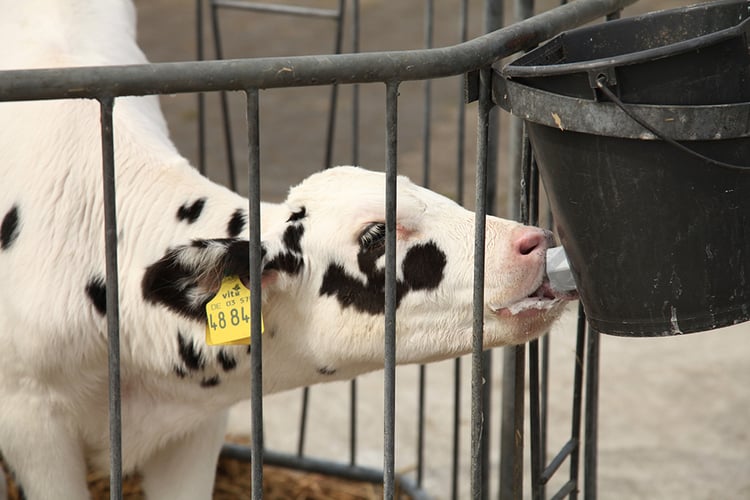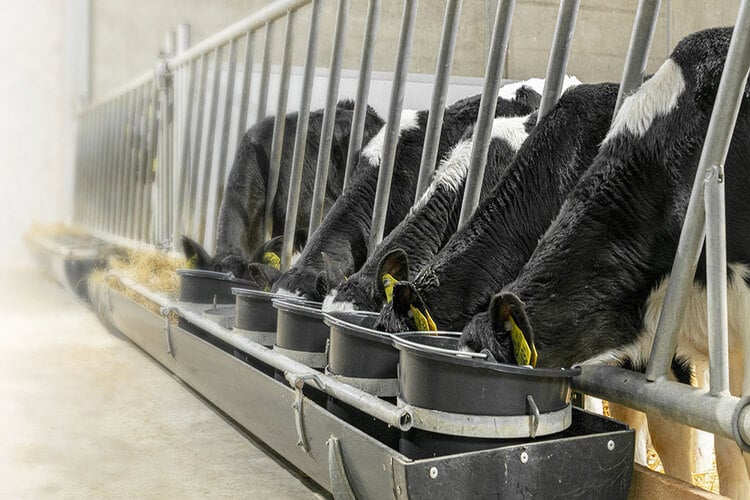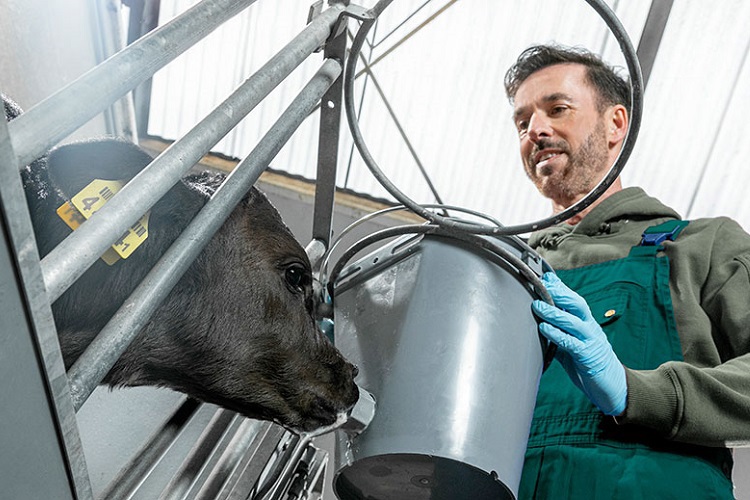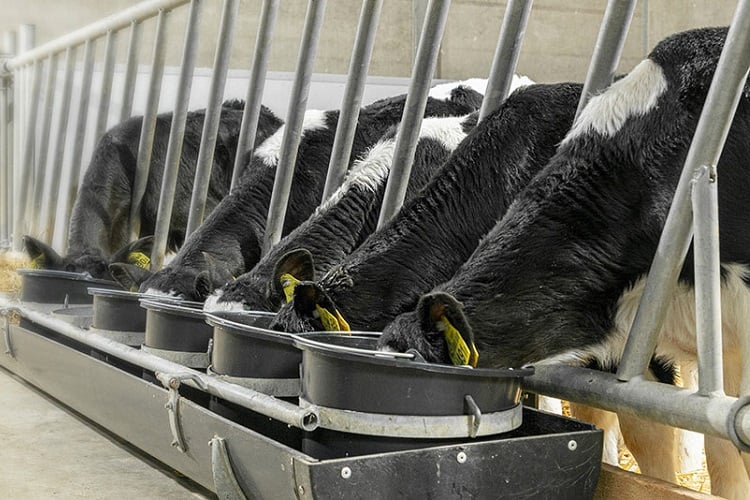
- LifeStart
- Role of fat in calf nutrition
- Lifestart themes
Key takeaways from the research
- Energized calf milk (ECM) with higher levels of fat at the expense of lactose is more closely resembling the composition of cow’s whole milk
- Increasing the level of fat in ECM did not affect performance, feed intake or digestibility, compared to commercial calf milk replacers
- A lower frequency of abnormal faeces was observed in valves fed ECM

Increasing fat levels at the expense of lactose in calf milk replacers improves faecal consistency without negatively affecting performance
The global trend in dairy calf rearing is to focus on growth performance using whole milk (WHM) or calf milk replacers (CMR) of high nutritional quality. Compared with most commercial CMR, WHM has a higher energy level[1,2]. Restricted calf feeding schedules with CMR formulations do not provide sufficient nutrients for the calf, which may influence immune function and disease susceptibility[3]. Compared to WHM, commercial CMR usually contains higher levels of lactose and lower levels of fat. Trouw Nutrition R&D and Wageningen University carried out a study[4] to test the effect of increasing fat level and decreasing lactose level on growth performance, intestinal permeability, digestibility and faecal consistency score of dairy calves.
Study design
The Energized calf milk replacer (ECM) was formulated by exchanging lactose for fat on a weight–weight basis. A commercial calf milk replacer (CMR) was used as control. Compared to the control, the ECM was isonitrogenous but not isoenergetic.
A total of 60 male Holstein-Friesian calves were assigned to 1 of 30 blocks based on serum IgG, body weight, and date of the collection after birth. Within each block, calves were randomly assigned to 1 of 2 treatments: ECM with high fat or CMR with high lactose. ECM and CMR were fed twice daily until 49 days of age, followed by a gradual weaning period of 14 days. Starter, straw, and water were available ad libitum throughout the entire study. Bodyweight, daily feed intake and incidence of diarrhoea were recorded and blood samples were taken. Total faecal collection and faecal scoring took place. Urine was collected for 24 hours and gastrointestinal permeability was measured by the appearance of indigestible markers in the urine.
Results
Bodyweight and average daily gain in the ECM and CMR group were similar. Despite the fact that there was no difference in nutrient digestibility, higher recovery of the indigestible markers lactulose and Cr-EDTA was observed for the ECM group, indicating an increase in gastrointestinal permeability. This did have a negative effect on diarrhoea incidence, faecal score or other parameters measured. A lower frequency of abnormal faecal scores was observed in the first weeks (1-3 wk) and around the weaning period (8-9 wk) in the ECM group. A possible explanation was a reduction in weaning stress due to the increase in energy content of ECM, resulting in a higher energy intake in the ECM group. An energy shortage can depress immune function and increase susceptibility to diseases of calves[3].
An intensive calf feeding schedule with an energized calf milk replacer (ECM) with an increased level of fat and a decreased level of lactose did not affect growth, total feed intake or nutrient digestibility. ECM was associated with an increase in permeability markers but positively influenced faecal scores and diarrhoea incidence in calves.
References
[1] Araujo, G., and A. Bach. 2015. Feeding strategies to improve performance and health of Holstein calves. PhD Thesis. Universitat Autonoma de Barcelona, Bellaterra, Spain.
[2] Lee, H. J., M. A. Khan, W. S. Lee, S. H. Yang, S. B. Kim, K. S. Ki, H. S. Kim, J. K. Ha, and Y. J. Choi. 2009. Influence of equalizing the gross composition of milk replacer to that of whole milk on the performance of Holstein calves. J. Anim. Sci. 87:1129–1137.
[3] Nonnecke, B. J., M. R. Foote, J. M. Smith, B. A. Pesch, and M. E. Van Amburgh. 2003. Composition and functional capacity of blood mononuclear leukocyte populations from neonatal calves on standard and intensified milk replacer diets. J. Dairy Sci. 86:3592–3604.
[4] Amado, L, Berends, H, Leal, L.N, Wilms,J, van Laar, H, Gerrits, W.J.J and J. Martín-Tereso. Effect of energy source in calf milk replacer on performance, digestibility, and gut permeability in rearing calves, 2019, J. Dairy Sci. 102:3994–4001.






